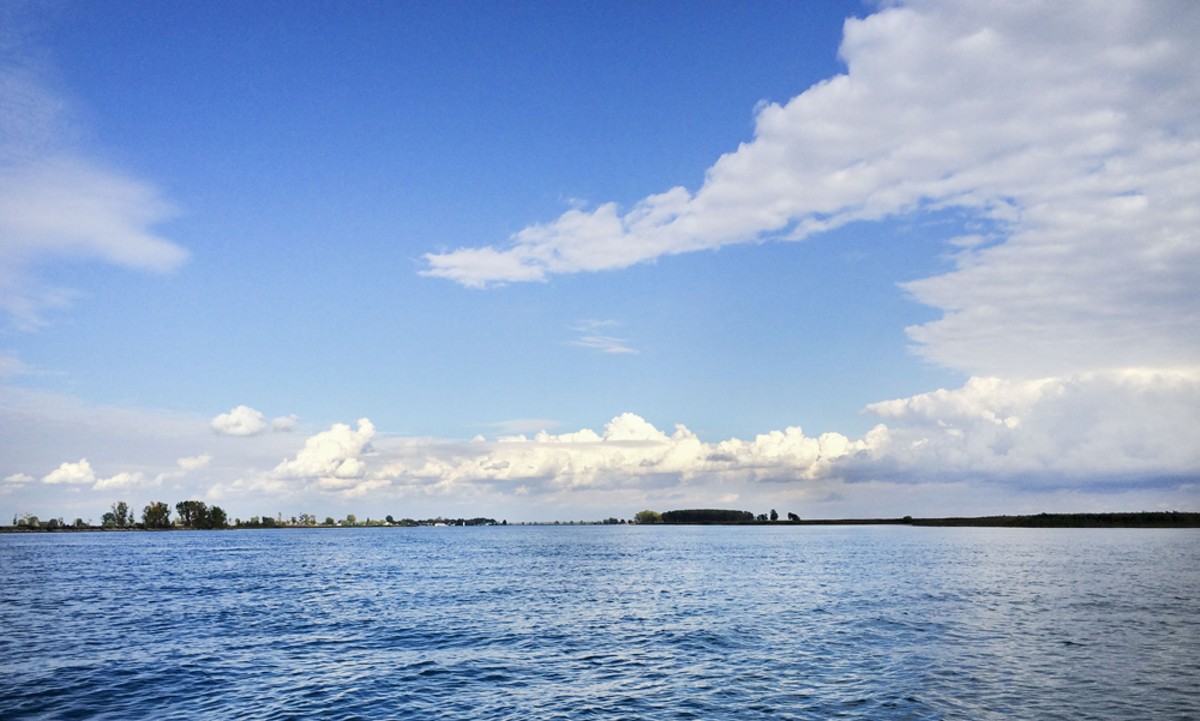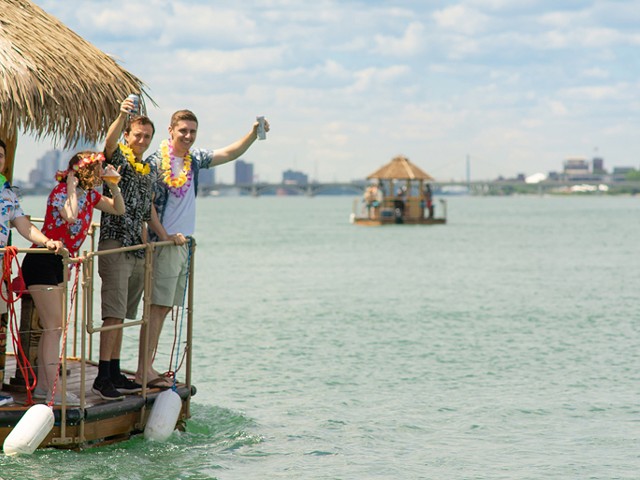If one were to put together an A-list of excellent islands around metro Detroit and Windsor, a few choices are obvious — Belle Isle, Grosse Ile, Walpole Island, Harsens Island, and even the industrial Zug. But there are more than 20 islands in the Detroit River, another 11 in the St. Clair River delta that empties into Lake St. Clair, and many more scattered throughout the region's waterways. Most aren't inhabited, so they don't get much thought. However, that's what makes them worth a visit — serenity and an escape from the craziness of metro Detroit are just a short boat or kayak trip away from any shore. Here are some of the top uninhabited islands that are only accessible by boat:
Humbug Island, lower Detroit River
Long before the nuclear power plant, Ambassador Bridge, Caesars Windsor, the Renaissance Center, Zug Island, and other developments lining the Detroit River cropped up, its shores were a vast patchwork of marshland and old-growth and second-growth forests. The 41-acre Humbug Marsh at the Gibraltar and Trenton border represents the last mile of natural shoreline on the U.S. side of the Detroit River (about 97 percent of the river's original shoreline has been destroyed), and Humbug Island is part of that.
The marsh and 32-acre island are also a piece of the Detroit International Wildlife Refuge, and the island serves as an important stopover location for migratory birds. That includes 17 species of raptors, like falcons and hawks, and in recent years bald eagles have nested on the island. Diving ducks live on Humbug's shoreline and in its waters, which also hold 51 species of fish, including rare breeds of bass, walleye, and catfish.
In 2004, the federal government bought the property for $4.1 million, ending an eight-year battle between preservationists and developers who wanted to build a golf course and condominium complex on the site. Humbug isn't far from other islands in the area that are part of the Detroit International Wildlife Refuge, and each offer a similar experience.
Peche Island, Detroit River
Peche Island is to Belle Isle as Windsor is to Detroit. The Rose City sits in the shadow of the Motor City; it's smaller, it's quieter, and not quite as exciting. But it's really cool in its own way once you figure out what's happening there. Similarly, Peche Island, a city of Windsor park, is a smaller, quieter, island than Belle Isle that on the surface isn't quite as happening as its neighbor, which sits just south of Peche.
However, there's more to the uninhabited 86-acre island park than appears on the surface. It's not totally owned by nature, as the city of Windsor laid down walking paths, built a wash house, and dropped a few picnic tables throughout the island, while the canals winding through Peche's interior can be used for kayaking. It also holds the ruins of the summer home of whiskey mogul Hiram Walker, whose brand lives on along the Windsor shore of the Detroit River. He allegedly lived there a hundred years before Chief Pontiac, but no one lives on Peche (which translates to "peach" in French) now, and relatively few people visit compared to its much larger neighbor, and that's what makes it an awesome place to visit. The city of Windsor last year purchased a pontoon boat to ferry visitors to the park.
Gull Island, Lake St. Clair
Do you like beer, babes, beaches, boomboxes, and bongs with your boat? Do you like the way the sand feels on your knuckles as you drag them across the warm beach? Then Gull Island is the spot for you. It's best known as the island that serves as the location for the notorious Jobbie Nooner — the annual "Mardi Gras of the Midwest" that attracts up to 10,000 boats and more than 100,000 people around Gull Island. But the party mostly doesn't stop throughout the summer, as the island is a spot where boaters link up, pour Miller Lite in one another's beer bongs, and pee in the turquoise waters.
Islands in Goose Bay, Lake St. Clair
If mixing babes, beer bongs, and boating isn't your thing, consider heading northeast from Gull Island to Goose Bay, where the St. Clair River's north channel empties into Lake St. Clair. This is where the islands are a little quieter and canvasback ducks far outnumber people. The clean, turquoise, shallow waters have white, sandy bottoms, and when a private little makeshift beach gets hot under the Michigan summer sun, it's one of the few places in Michigan that can make you think you're in the Caribbean.
The St. Clair River delta that Goose Bay is a part of is the nation's largest freshwater delta, and its islands are mostly filled with green trees and brush that push up to the water's edge. One can simply drop anchor near the shore, or put a little more effort into finding a spot or beach on shore that's suitable for a picnic or a place to relax. Hawkins Point, which is the final barrier between the river and the wide open blue lake, holds one such secluded spot.
Like the rest of the islands and waterways around Detroit, it's an excellent place to birdwatch. An estimated 20,000 birds pass through the delta area annually, among them ospreys, heron, and bald eagles.
Stay on top of Detroit news and views. Sign up for our weekly issue newsletter delivered each Wednesday.







